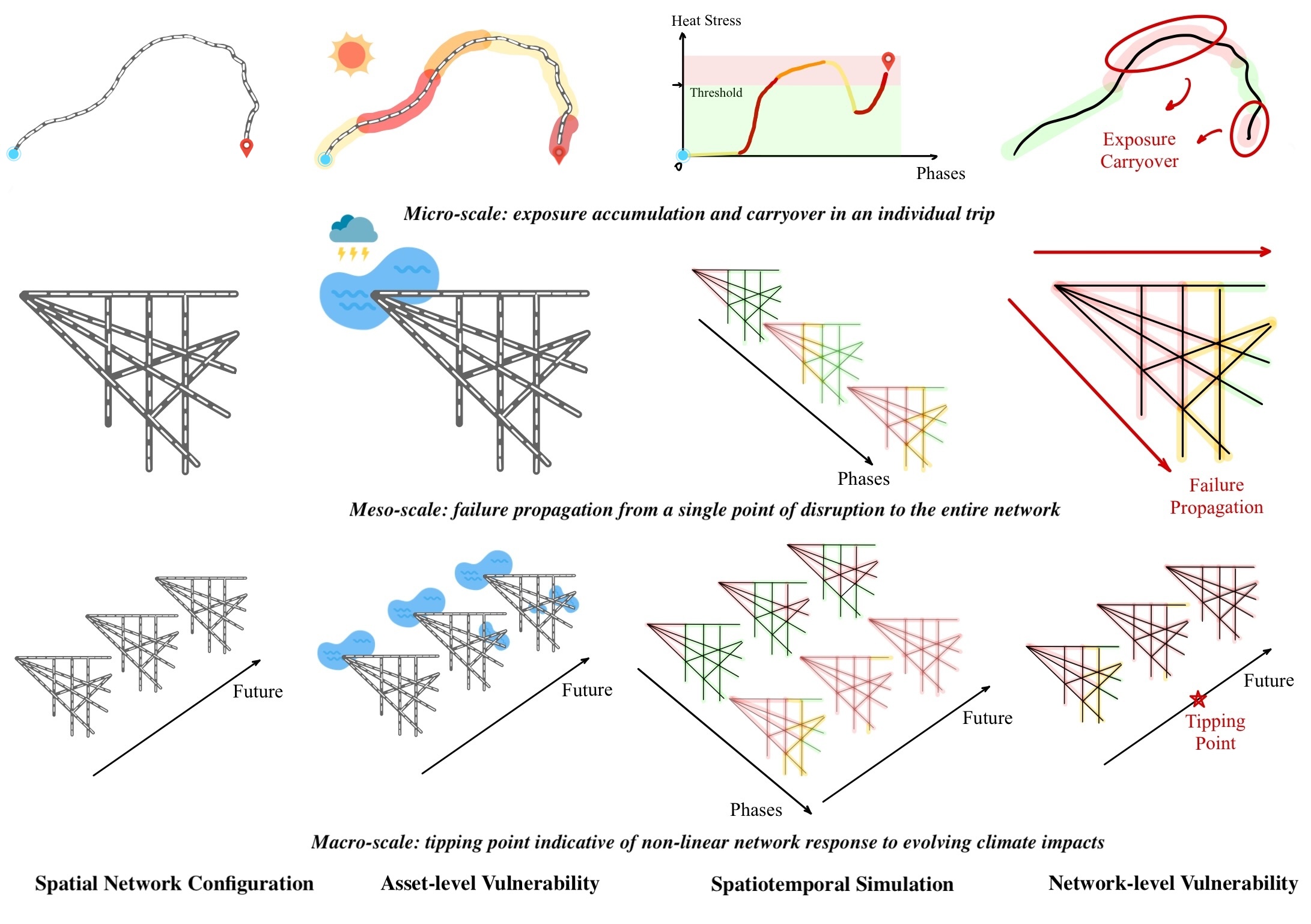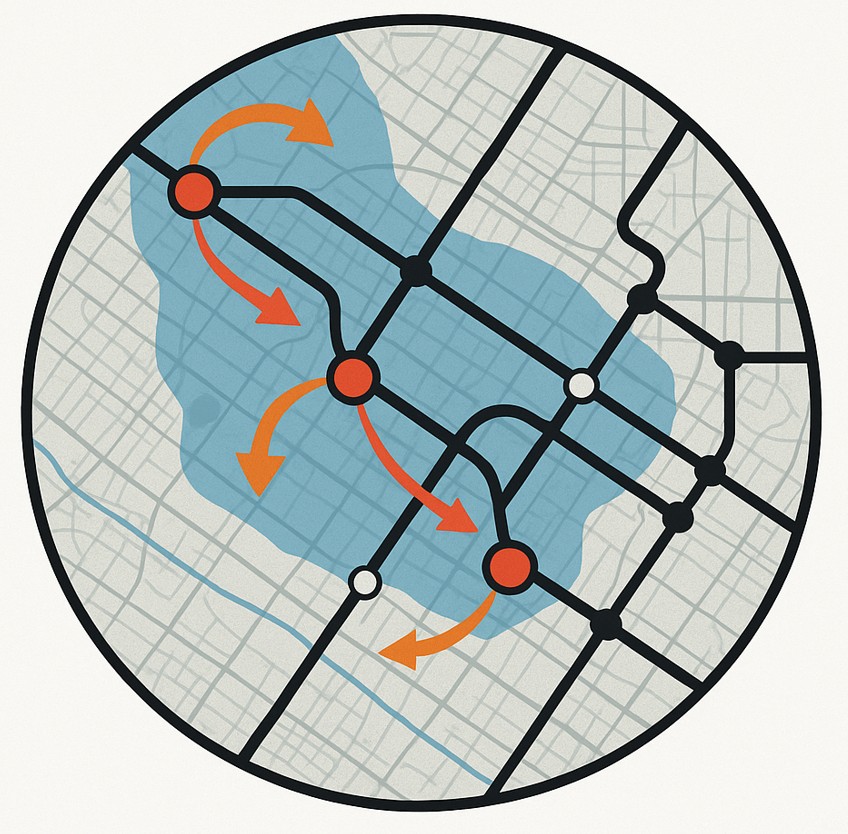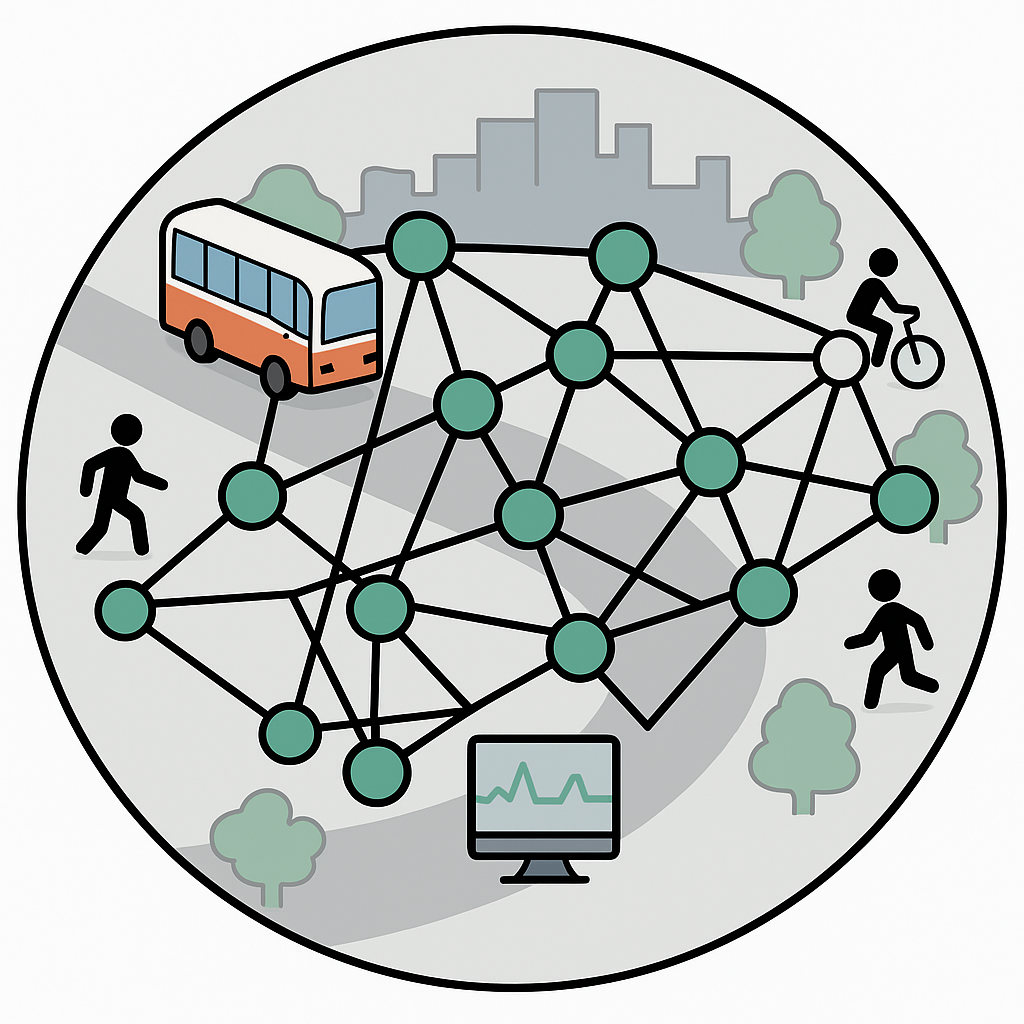Research
Our Vision
The THRIVIN’ Group investigates how climate-related stressors impact transportation systems and their cumulative and cascading effects on public health. We use real-world transportation networks as natural experiments to uncover emerging properties in complex, interdependent systems. Our research focuses on how environmental exposure accumulates at the trip level, propagates through network interdependencies, and contributes to systemic tipping points across multimodal transportation infrastructures.
Research Question
How do transportation systems influence sustainability, resilience, and public health at the network level?
Our Goal
We aim to develop cyber-physical systems (CPS) that monitor, simulate, and improve transportation network resilience and health. These systems integrate human behavior, infrastructure vulnerability, and real-time sensing to support decisions that reduce health risks and ensure equitable, climate-adaptive mobility.
Our Framework
Our research spans multiple scales— from micro-level exposure accumulation during individual trips, meso- and network-level modeling of cascading failure, to macro- or multi-temporal-level discovery of tipping points. Using spatiotemporal simulations, we track how localized failures can trigger broader disruptions and affect system-wide accessibility.

Cyber-Physical System Pipeline
- Conceptualization – framing human-infrastructure-health interdependencies
- Sensing – capturing real-time environmental and behavioral data
- Simulation – modeling cumulative exposure and system dynamics
- Mitigation – evaluating adaptation strategies
- Optimization – improving network design and intervention timing
- Navigation – supporting public health and planning decisions

By bridging civil engineering, climate resilience, and data science, the THRIVIN’ Group is committed to building tools and knowledge that help communities adapt to a rapidly changing world.




